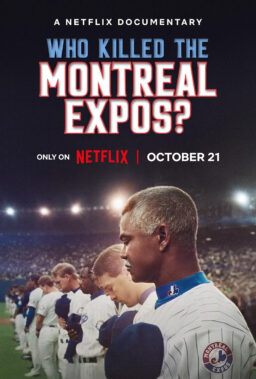When this year’s SXSW Film Festival was canceled, it sent shockwaves through an already-fragile industry. It was really just the beginning. Since the cancellation, theaters around the country have been closed and other festivals have been canceled or postponed. A lot of those festivals will come back next year or in the fall, but what will happen to the movies that were supposed to premiere in Austin over the last week? Most of them are still looking for homes at other festivals or alternate ways to get their projects in front of viewers. A lot of filmmakers reached out to us about covering their films that were set to premiere at SXSW, which presents an interesting conundrum. A review of a movie at a festival comes with a premiere—an event at which family, friends, and colleagues can soak in a hard-earned moment of joy. It would feel rather Scrooge-like to pan a film that never even received that burst of creative excitement that comes with a premiere. Negative reviews at festivals are often off-set by receptive audiences that simply wouldn’t exist here. So we chose to spotlight only movies that were set to premiere at SXSW that we like—the best of what never was. These are the films we hope other festivals will pick up and that people will be able to see soon.
As I was watching the joyful and powerful “A Most Beautiful Thing,” I thought about how the event would have played out in Austin. The on-stage gathering of the guys featured in the doc, and the likely standing ovation that would have followed. There’s something so surreal about watching a film festival’s program at home. We do it a lot in advance of fests like Sundance or Toronto, but those feel like previews of events to come. The warm reception I expect would have greeted Mary Mazzio’s film in Texas will now happen elsewhere. But it will definitely happen.
“A Most Beautiful Thing,” which was executive produced by Chaz Ebert, although she has had no influence or editorial oversight of this piece, tells the story of the Manley rowing team, a group of Black athletes from the West side of Chicago who found a new kind of family on the water. Mazzio bites off a lot with her approach, placing the guys in the context of violence in the Windy City, even diving into how people growing up in gang-influenced communities have worse rates of PTSD than soldiers who serve in combat. And she really gets at something when one views her film as a commentary on combined focus—people from different backgrounds and eventually different races coming together with one purpose. Some of “A Most Beautiful Thing” is a little overdone in filmmaking terms, but I adored the storytelling and compassion in Mazzio’s approach. Not everyone could have gotten these guys to open up the way they do in “A Most Beautiful Thing,” and that’s often an underrated element of documentary filmmaking. Common may do the narrating but Mazzio lets the people like the unforgettable Arshay give the film its momentum. And these guys who could have had much different lives recognize how the most unexpected art of rowing changed their trajectories. At its best, Mazzio’s approach reminded me of Steve James, another filmmaker whose undeniable empathy comes through in every frame.

If Mazzio’s film echoes Steve James, Jason Sussberg and David Alvaradao’s “We Are As Gods” feels inspired by the work of Werner Herzog, a great filmmaker who has long been interested in true stories of man’s relationship with nature. The subject of their film, Stewart Brand, is right in the Herzog wheelhouse, a man who is challenging the very nature of how we view history and our future on this planet. Brand has long been a free-thinker, a man whose work inspired people like Steve Jobs and Steve Wozniak, but his latest project has provoked the kind of spirited debate that would have made for an amazing Q&A at the SXSW film festival. Hopefully, it will still take place at another festival.
Brand was the man behind the Whole Earth Catalog, which could be called Google in print form, before the internet. It was a massive hit in the counter-culture movement, in which Brand was a leader in terms of experimentation and social movement. Now that the hippie has gone relatively extinct, Brand has transformed his life into a quest to lead what’s called de-extinction, bringing extinct species back to life through genetic manipulation. Yep, it’s basically “Jurassic Park,” finding fossilized wooly mammoth DNA and trying to inject it into an elephant bloodline to literally bring the species back to life. As you might imagine, not everyone thinks it’s a great idea.
“We Are As Gods” can sometimes feel as unfocused as its free-thinking subject matter, but it’s never less than interesting, bouncing around big ideas about our place in the world and in the timeline of its existence. And I liked how the directors were willing to directly confront some of Brand’s beliefs in the second half, recognizing that his beliefs about technology and the human condition aren’t shared by all. Ultimately, this a deep dive into the history and life of a truly fascinating man who sees the ‘whole Earth’ in a way that you probably don’t.

Another film about people trying to challenge perception and societal structure is Maria Finitzo’s “The Dilemma of Desire,” a documentary that breaks down the double standard in terms of how we talk about male and female sexuality. A lot of it hinges on the clitoris, both how the word has been deeply stigmatized in ways that the male counterpart simply hasn’t, and how that leads to bigger problems in the woman are shamed and diminished when it comes to something as natural as sex. We have a thousand words for the male anatomy that can be said on CBS sitcoms, but the opposite is true for women. As one of the fascinating subjects points out, even women themselves turn away from discussion of sexuality in ways that we simply don’t when it comes to men. You can see Viagra commercials on TV right now, but any discussion of female orgasm is seen in a different light. It’s a graphic double standard that this film expertly analyzes, mostly through interviews with people trying to reverse it.
“The Dilemma of Desire” is mostly a profile piece, bouncing between subjects invested in the cause of how we talk about female sexuality. It’s well-constructed, and the interviews strike a nice balance between being thought-provoking and entertaining. Again, this is a film that will almost certainly produce wonderfully informative and revealing Q&A events, and I regret that these couldn’t have started in a town as progressive as Austin. It’s a movie designed to get people talking. Let’s hope that conversation is allowed to start soon.

Finitzo’s film is one of two projects from the wonderful Kartemquin Films that were set to premiere at SXSW. The other is Jenny Shi’s devastating “Finding Yingying,” about the murder of Yingying Zhang in 2017 at the University of Illinois. Shi was there from the beginning, a contemporary of Zhang’s at the school, and so her access feels completely different than this film would have in anyone else’s hands. So does her focus. The details of the case are here, but what’s different is the human element. For example, Shi travels with the family as the days drag on in the search for Zhang before her body was discovered, and she’s there for the emotional tumult of the trial. Instead of a typical true-crime approach that focuses on the investigation, “Finding Yingying” becomes about the impact of crime, especially in how things become more painful when they happen halfway around the world.

It’s not a Kartemquin film, but “Hamtramck, USA” feels like it easily could be. It has that tapestry approach to documentary filmmaking that one sees in projects like “America to Me” and “City So Real,” but this is a story of a very specific and unusual place. Hamtramck made headlines when it became the first majority Muslim city in the country, thanks to growing Bangladeshi and Yemini sections of the city. A place that had been notoriously Polish for generations was now definitely not, and directors Razi Jafri and Justin Feltman saw how this unique city could be reflected in an upcoming mayoral race. At rallies, speeches, events, and just following candidates through the street, the filmmakers take a very hands-off approach, allowing the community to tell this story. Again, like Kartemquin, they realize that just being truthful and present can offer cinematic insight.

Far less ambitious but still remarkable in its own way is another film that examines gender roles through the very personal and detailed stories of its subjects. Sarah Brennan Kolb’s “Good Ol Girl” is a delicate and compassionate profile piece about three young women who could be called modern cowgirls. They grew up and live in different parts of Texas, but the film keeps circling back to a fading picture of rural life. For example, one of them is a cattle rancher, which keeps her remarkably busy, but she longs for someone to be there to do the job alongside her. As the concept of the American West dwindles away, there are still people stuck within it, whether it’s out of choice or obligation, and Kolb’s film is a sweet and tender piece about a changing America told through three unforgettable faces.












